A CORSAIR STORY
By Alistair Heathcote
Having observed that there are a number of Corsair enthusiasts in the club I thought you might find this interesting.
In October 2008 I visited the British Fleet Air Arm museum near Yeovil, in the county of Somerset. This is in the south west of England. Although the museum was in upheaval preparing exhibits for the 100th anniversary of flight in UK, the Corsair exhibit was fully on display with all placards in place. I have looked at this exhibit before but not studied it until now. The museum approached the work necessary in a way not typical of aircraft museums – they preserved it instead of restoring it – and here is the story behind the display.
The Museum Challenge
- Could they uncover, return to and preserve the original finish?
- Is this work important and worth the time?
- Decided ‘ yes’ and they hoped their approach on this aircraft – KD 421 – might prompt other museums and collectors to think before they ‘unpaint’ and then re- paint.
- Having been successful in their mission, this aircraft is now the last Corsair in the world in totally original service condition and is an extremely accurate and valuable reference source.
The Aircraft – Corsair KD 421
- Built under licence by Goodyear Aviation in 1944
- Delivered by ship to the UK in November 1944
- Joined the Fleet Air Arm (FAA) in Jan 1945 with Squadron 1835. Ended service life in Jan 1946 with Squadron 768 and then became a static training aid at Cranwell College.
- Transferred to the newly opened FAA Museum in 1963, painted and put on display
- In 2000 moved to the restoration facility in the museum for in depth survey and action. The results and findings have proven –
- This is the only complete FAA Corsair in existence
- Is one of only two remaining FG-1A type out of 50 Corsairs remaining in the world.
- Is now the last Corsair known to exist in its original WW2 condition?
Findings during Project Activity
- The aircraft was repainted in the wrong colour blue in 1963 when it entered the Museum. In 2000 this was painstakingly removed using tapes and scrapers, to expose the original 1944 paint finish.
- Investigation of damage discovered on the propeller showed the aircraft had a landing accident on 27th Sept 1945. A maintenance card was found in the Museum Archive that also gave the pilots name. Also helped prove that engine and propeller were those originally, factory fitted.
- The hand applied, original factory serial numbers were still evident on the cowl and fuselage. The gas reactive patch (a red ring on the left hand wing, in full view of the pilot) was still evident. The last known example of this from WW2.
- Many original WW2 markings revealed such as – original roundels, factory applied stencils, dull red gun port tear off strips, remains of tape strip used to cover parts of the folded wing during transit across the Atlantic by ship.
- On the tail, beneath the factory applied dark blue paint is green and grey camouflage paint. Research showed that this tail was a left over from Brewster production after their factory was closed in June 1944. These are the only known Brewster Corsair parts in existence.
- The E2-M Squadron code markings date from time with Squadron 768. Beneath these were discovered a single letter ‘S’ dating from its earlier time with Squadron 1835. There was also a colour change from white to pale blue as the change in Squadron saw a transfer from Europe to the Far East.
This relates a few of the many interesting findings that are detailed on the display boards around the aircraft. Close examination of the actual aircraft does not always reveal the recorded finding clearly as, for some reason, the museum has illuminated this and other aircraft with sodium yellow lighting. This significantly distorts the colours and the colour contrasts making successful photography somewhat difficult. Flash photography was not successful either. Anyway, I have included some photos of the actual aircraft for your appreciation and some photos of the photos that appeared on the display boards, to try to support the text.
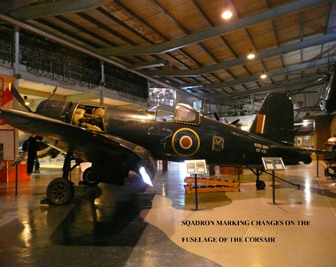
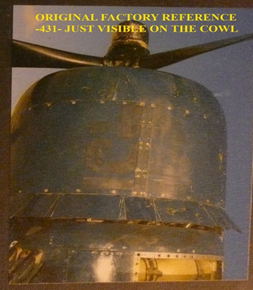
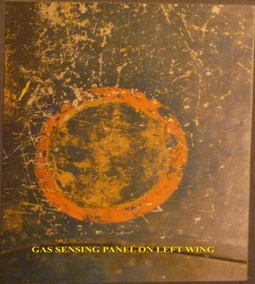
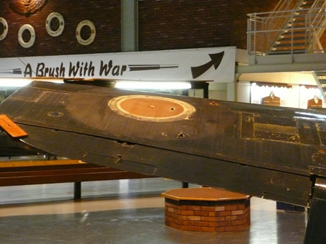
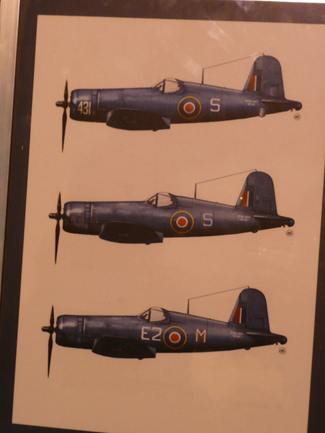
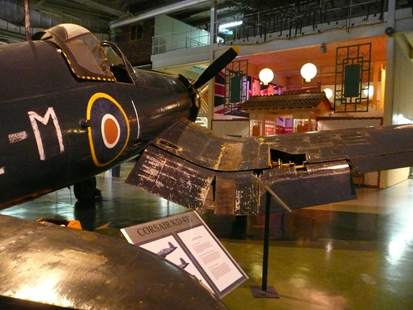
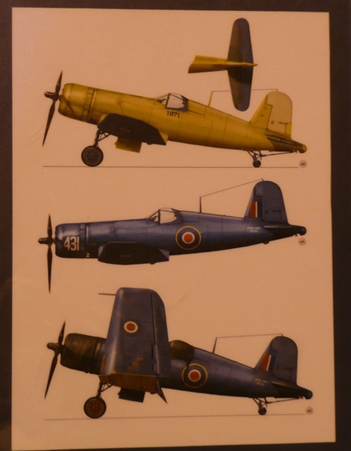
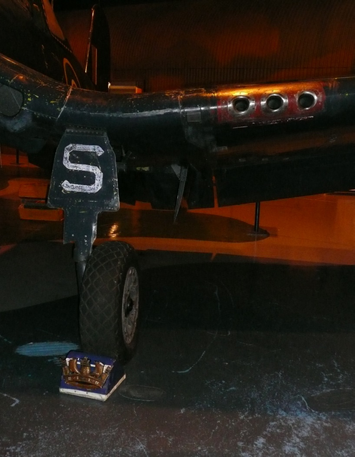
What a finishing challenge for anyone trying to reproduce a model of this one!!! – It sure would be different.
Enjoy
Alistair